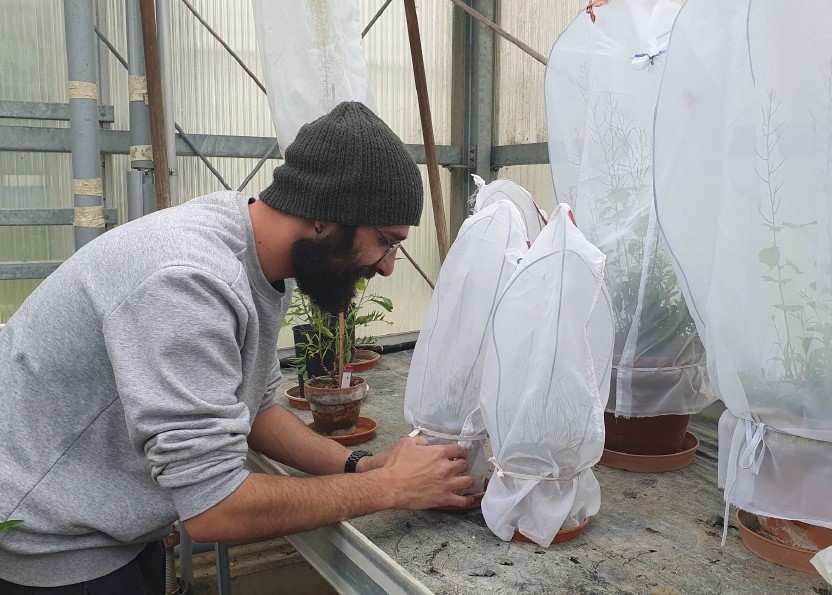
After nearly 25 years of research, permission has been granted by the Canadian Food Inspection Agency (CFIA) to release the seed-feeding weevil Ceutorhynchus constrictus to sustainably control invasive garlic mustard plant in Canada.
Garlic mustard (Alliaria petiolata) was accidentally introduced to North America in the 19th century. It is one of the few non-indigenous herbaceous species that can invade and dominate the understory of North American forests.
The plant blocks sunlight to native species, stunting their growth and out-competing them for moisture and vital nutrients. Its spread has also been negatively impacting the rare West Virginia white butterfly (Pieris virginiensis).
Garlic mustard is considered one of the most serious invaders
In the northeastern and midwestern USA and eastern Canada, garlic mustard is a serious invader and control methods include hand removal, burning, cutting and herbicide treatments to reduce large densities.
However, these treatments are costly with the size of the invasion and require repeated effort over several years and in the case of herbicides may not be possible at all sites.
With partners at the University of Minnesota, Agriculture and Agri-Food Canada and the University of Toronto, CABI has investigated the possibility of using specially selected and tested insects from the native range to safely control the plant’s spread and impact in the introduced range.
CABI’s work with colleagues from the University of Minnesota has demonstrated that C. constrictus has the potential to achieve considerable impact on garlic mustard populations.
Provide an effective way to control garlic mustard

In February 2025, the release of the seed-feeder was recommended by the USDA-APHIS Technical Advisory Group (TAG) for the USA, and it was approved by CFIA for release in Canada.
Dr Rob Bourchier, of Agriculture and Agri-Food Canada, said, “Weevils from a rearing colony at CABI in Switzerland will be shipped to Agriculture and Agri-Food Canada and field releases are expected in spring/summer 2025.”
Dr Jeanie Katovich, researcher at the University of Minnesota, said, “The ability to release C. constrictus into areas with garlic mustard in Canada is great news. Garlic mustard spreads exclusively by seed, so release of this seed-feeding weevil can reduce the number of garlic mustard seeds produced. The release of C. constrictus, in combination with the crown-mining weevil, C. scrobicollis, provides a method for long-term management of garlic mustard in woodlands.”
Additional information
Main image: After nearly a quarter of a century of research, the seed-feeding weevil Ceutorhynchus constrictus has been approved for release to sustainably control invasive garlic mustard in Canada (Credit: CABI).
Project page
Find out more about CABI’s work on the biological control of garlic mustard from the project page here.
Relevant stories
‘Garlic mustard threatens the rare West Virginia white butterfly.’
3 Comments
Leave a Reply
Related News & Blogs
Garlic mustard threatens the rare West Virginia white butterfly
Garlic mustard (Alliaria petiolate) is a highly destructive invader in North America. As well as hindering the survival of native plants, it poses a particular threat to the survival of the rare West Virginia white butterfly (Pieris virginiensis). Garl…
9 March 2023

How thoroughly has the possibility of impacts on other brassicas been tested?
Hello Anders, Classical biological control projects take many years of study and comprehensive regulatory process is followed. In brief, documentation is submitted to a committee of experts: In Canada, the Canadian Biological Control Review Committee is appointed by the Canadian Food Inspection Agency, and in the USA, the Technical Advisory Group (TAG) appointed by USDA-APHIS, to review the data and assess the risk to native and economically important plant species. In both countries, there are several levels of approval, and biocontrol agents are only approved for release if they are deemed safe for the native species and plants of economic importance. More information on the process in both countries can be found on
Import and release of biological control agents into Canada – inspection.canada.ca
https://www.aphis.usda.gov/organism-soil-imports/biological-control-organism-permits/biological-control-weeds
The garlic mustard seed feeder, Ceutorhynchus constrictus was tested with over 100 species including species closely related to garlic mustard, and a representative selection of species in the cabbage family as well as other families which may be in contact with the weevil. Host range tests covered a large number of North American native species, including threatened or endangered species, but also relevant ornamentals and crops.
I have a managed forest in southern Ontario which is heavily infested with garlic mustard. How do I found out more about the release of the weevils in our area?